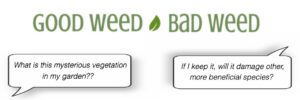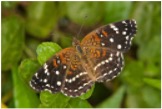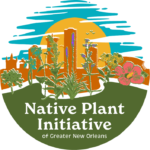The Gift of the Wild Things, Good Weeds and Bad Weeds
by Susan Norris-Davis

Over the years, I have had the opportunity to work in various public gardens dedicated to native plants and to share knowledge pertaining to their role in sustaining the health of our wider regional ecosystems. Since they are gardens open to the public, where a pleasing, orderly appearance is usually required, weeding is a major part of the upkeep.
It occurred to me, as I pulled weeds, that some of them had to be native to our area and must have their part to play. The questions arose: What are their growth habits? Will they work in this garden? What is their natural role? Do they have ornamental, medicinal, or edible traits? As I researched and weeded, more questions: What to do about plants that were unclear as to native or not? What about non-natives that had value in the garden and did not appear to pose a significant problem? How best to get rid of unwanted weeds without undue disturbance to the garden which would cause additional problems? How are all these weeds getting here?
As I started to selectively weed, keeping desirable, mostly native plants and doing my best to eradicate those unwanted, I found the diversity of the native gardens deepening and my frustration at not being able to find more varied natives at local nurseries easing- and this diversity was free! — except of course for the work involved in research, identification, experimentation, and observation. My notes began to pile up and the information about these ‘weeds’ has become fascinating to me. Culturally, socially, linguistically, technologically – there are so many ways that these plants are relevant. I thought not only might this be of interest to others, it is arguably an essential part of living sustainably in our communities.
Convinced of the value of this localized information and its relevancy, I conceived of a way to create a tool by which people learning the ins and outs of their gardens, or just observing natural spaces, might find answers about the “good weeds” and “bad weeds that they came across. In July, 2022, I submitted a grant proposal to LNPS to create this tool — an online database for weeds of southeast LA. The idea was to provide a quick, reliable, online resource that allows the home gardener to make informed decisions about weeds. LNPS approved the grant to get started, and additional funding was procured from the New Orleans Town Gardeners (NOTG), the Meraux Foundation, and the Native Plant Initiative of Greater New Orleans (NPI). A web developer was hired and used FileMaker Pro to set up the database with an initial list of 20 species. I did the initial research on a volunteer basis to populate the database and worked closely with the developer, learning how best to set it up and get it up and running….by doing.
Here are a couple of examples of intriguing ‘weeds’, described now in the database, that I learned so much about that are so interestingly intertwined in both natural ecology and human culture. First, Peppergrass - Lepidum virginicum. It is found statewide in LA in sunny, disturbed areas in late winter and spring. The leaves and flowers are edible and the seeds are used as a pepper substitute. It is a member of the mighty Mustard family. In an interview for “Louisiana Eats” by Poppy Tooker on NPR, Leah Chase recounts how she uses Peppergrass picked from the sidewalks as a potherb for ‘Gumbo Z’herbes’ made traditionally on Maundy or Holy Thursday. Look for it in bloom in March/April and starting to set seed on the side of the road.
Then, there is Looseleaf Waterwillow - Justicia ovata.

If you were at the LNPS conference in February, you may remember this species from the John Hartgerink’s presentation on the Bluebonnet Swamp. It was noted as a larval host for the sometimes rare Texas Crescent butterfly (with the piano keys marking). It is a pretty, shade-loving

groundcover of wet areas. Look for it this summer.
The “Good Weed/Bad Weed” database is accessed through the npi-gno.org website. Click on the ‘Resources’ tab and then the database on the drop-down menu. There is a brief introduction, a few instructions, scroll to the bottom, and click on the ‘GOOD WEED/BAD WEED’ button. That’s it, you’re in! No usernames, no passwords.
You can enter known info about a plant in a set of guided boxes to search by characteristics or by scientific name (listed alphabetically on the dropdown menu). A good plant id app can provide you quickly with the scientific name. Once you have a selected species, the first screen is a fast read with a photo, native/non-native status, recommendation to keep, observe, or remove, warm or cool season, and bloom color. If you have the concentration for in depth info, click to the next page which gives a detailed description and more photos. You can access this database on any electronic device including your phone. We hope (we tried really hard) we made it easy and fun.
NPI has now provided additional funds to create a data entry interface that makes adding new species to the library easy for a small team of specially recruited volunteers that are beginning this work currently. Costs going forward now consist only of a monthly maintenance fee to host the database and the occasional use of our developer for trouble-shooting and software updates. We plan to have 100 additional species added by the end of 2024 and will keep adding to the database until we run out of weeds…in other words, ‘til we die!
I will close with the source of this article’s title from Caroline Dormon (1888-1971).
“I was born with something - I call it ‘the gift of the wild things’ - and because I am simple myself, and have a sympathetic heart, I can understand animals and simple people to an unusual degree. I see, too, so much that others miss. When I know so many lovely things, I feel greedy in keeping them all to myself.”
( C.D. in application for a Guggenheim Fellowship, 1942 from The Gift of Wild Things: The Life of Caroline Dormon by Fran Holman Johnson.)
